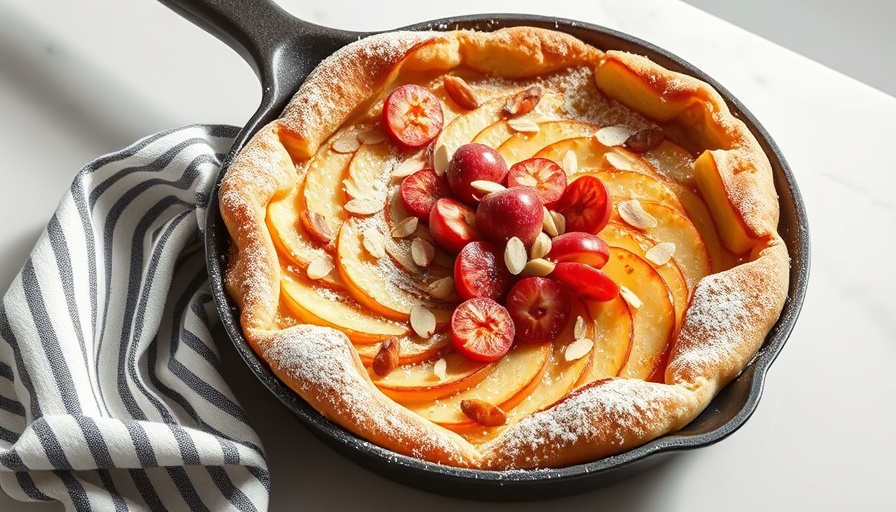
The Delight of Dutch Baby Pancakes: A Culinary Tradition
While many parents relish the familiarity of Sunday morning pancakes, the Dutch Baby Pancake offers a delightful twist that can transform the typical brunch into a captivating feast for the whole family. Known for its custardy interior, bold flavors, and dramatic rise, this dish not only pleases the palate but also brings smiles and 'oohs' and 'ahhs' from everyone around the table.
Understanding the Dutch Baby's Origins
Originally called 'Deutsch' baby after its German roots, the name was whimsically altered to 'Dutch' by the daughter of a restaurant owner. This quirky history adds an element of narrative charm to your cooking experience, inviting children to embark on a culinary journey through time while enjoying their meal. The Dutch Baby's genesis can be traced back to a Seattle diner in the early 20th century, inspired entirely by traditional German pancakes.
Why Are Dutch Babies So Special?
The hallmark of the Dutch Baby is its unique cooking method, which makes it a delightful alternative to traditional pancakes. Baked rather than fried, it emerges from the oven puffed and golden, resembling a fluffy soufflé rather than a flat pancake. This method not only enhances its texture but also encourages an engaging family-style dining experience. Each member can take a slice from the skillet, making for a casual, communal atmosphere perfect for splendid weekend mornings.
The Simplicity Behind the Recipe
One of the most appealing aspects of the Apple Dutch Baby is its simplicity. The base ingredients are typically found in your pantry: eggs, flour, milk, and a few seasonings. Adding fresh, sliced apples creates a scrumptious topping and elevates the dish significantly. Depending on your family’s preferences, the process can be tailored with various seasonal fruits or spices.
Enhancing Flavor with Delicious Toppings
Consider elevating your Dutch Baby by incorporating diverse toppings. Traditional powdered sugar is always an option, but why stop there? Drizzle homemade apple cider caramel syrup—a delicious concoction of reduced apple cider—for a complex flavor profile that intrigues the taste buds. Other variations could include whipped cream, maple syrup, or even a dusting of nutmeg for a cozy autumn ambiance.
Engaging Your Kids: Cooking Together
One of the best parts about making an Apple Dutch Baby is the chance to involve your children in the cooking process. Letting them assist in mixing the batter or arranging the apple slices can ensure they feel connected to their food. Moreover, embracing a culinary tradition from another culture opens a dialogue about the world, food history, and the importance of family meals in their upbringing.
Potential Health Benefits of Dutch Babies
Besides being a delightful brunch item, Apple Dutch Babies can incorporate elements of holistic health into your family’s diet. By using whole, fresh ingredients like eggs and apples, you can provide nutrition without sacrificing taste. Moreover, families adopting a holistic lifestyle often seek ways to engage in natural cooking methods, and this simple recipe aligns perfectly with such values, promoting health consciousness from a young age.
Creativity in the Kitchen: Experimenting with Flavors
Each Dutch Baby can become a canvas for creativity. Parents can experiment with various fruits, including pears, berries, or even tropical flavors, to keep the experience fresh and exciting. Adding a touch of cardamom or a splash of vanilla into the batter can introduce a delightful depth of flavor.
A Call to Action: Embrace Family Cooking
In an age where family meals are often overlooked, taking the time to engage in cooking can foster closer relationships and healthier living. Try adding the Apple Dutch Baby to your family's brunch rotation; it's more than just a meal—it's an opportunity for connection, creativity, and exploration within your culinary traditions. Gather your loved ones, go apples picking, and recreate those cherished moments together.
 Add Row
Add Row  Add
Add 




Write A Comment